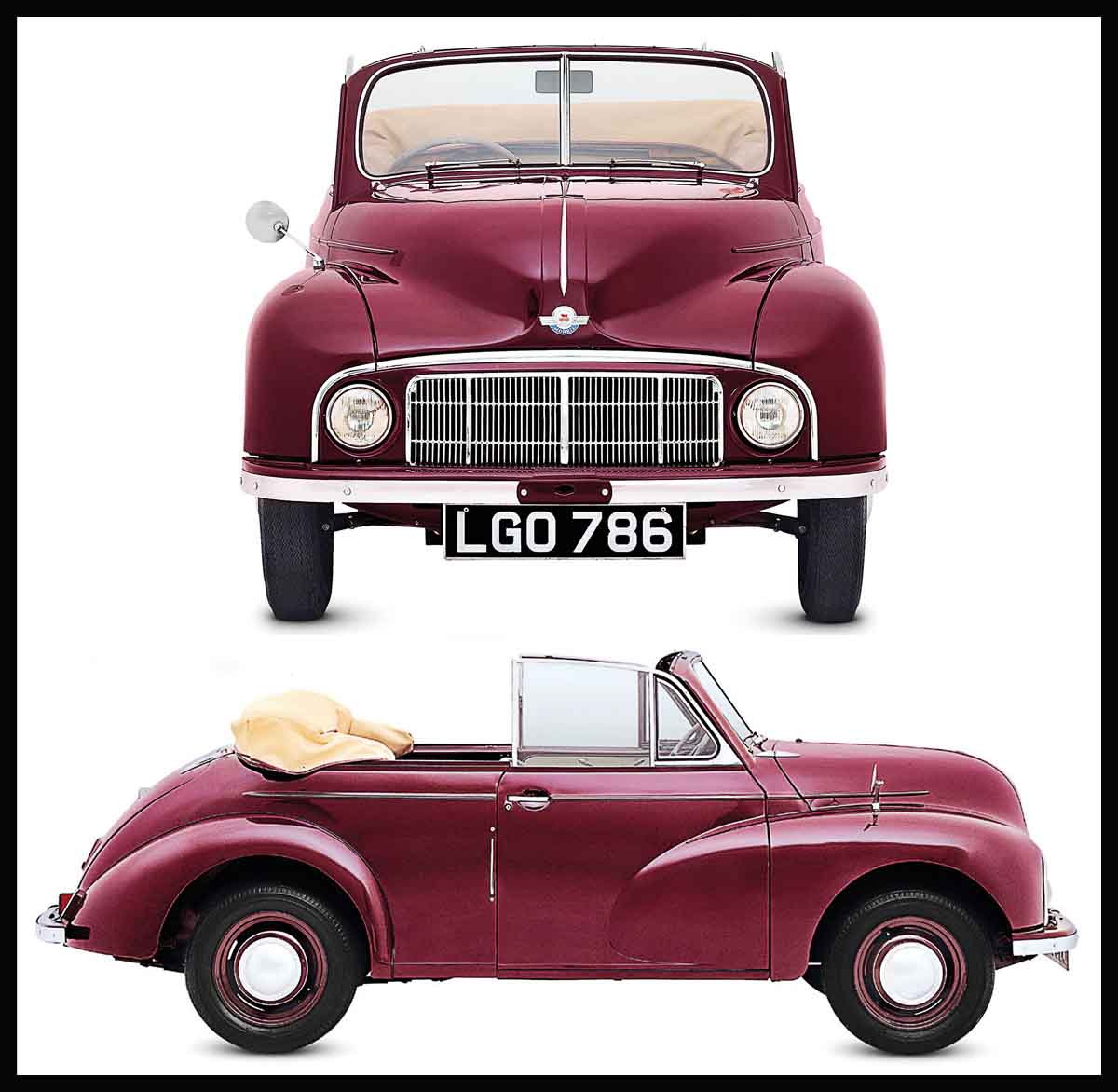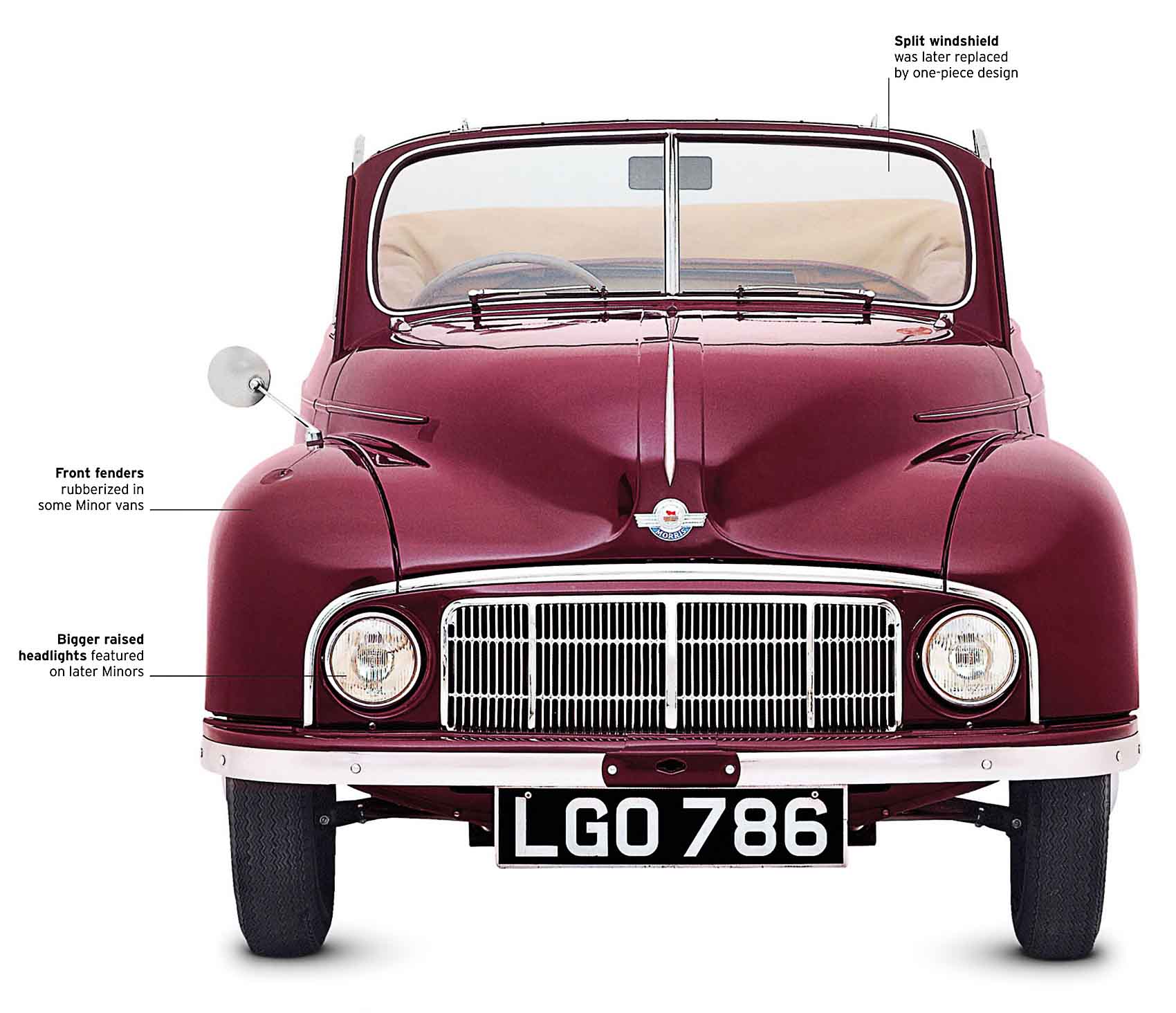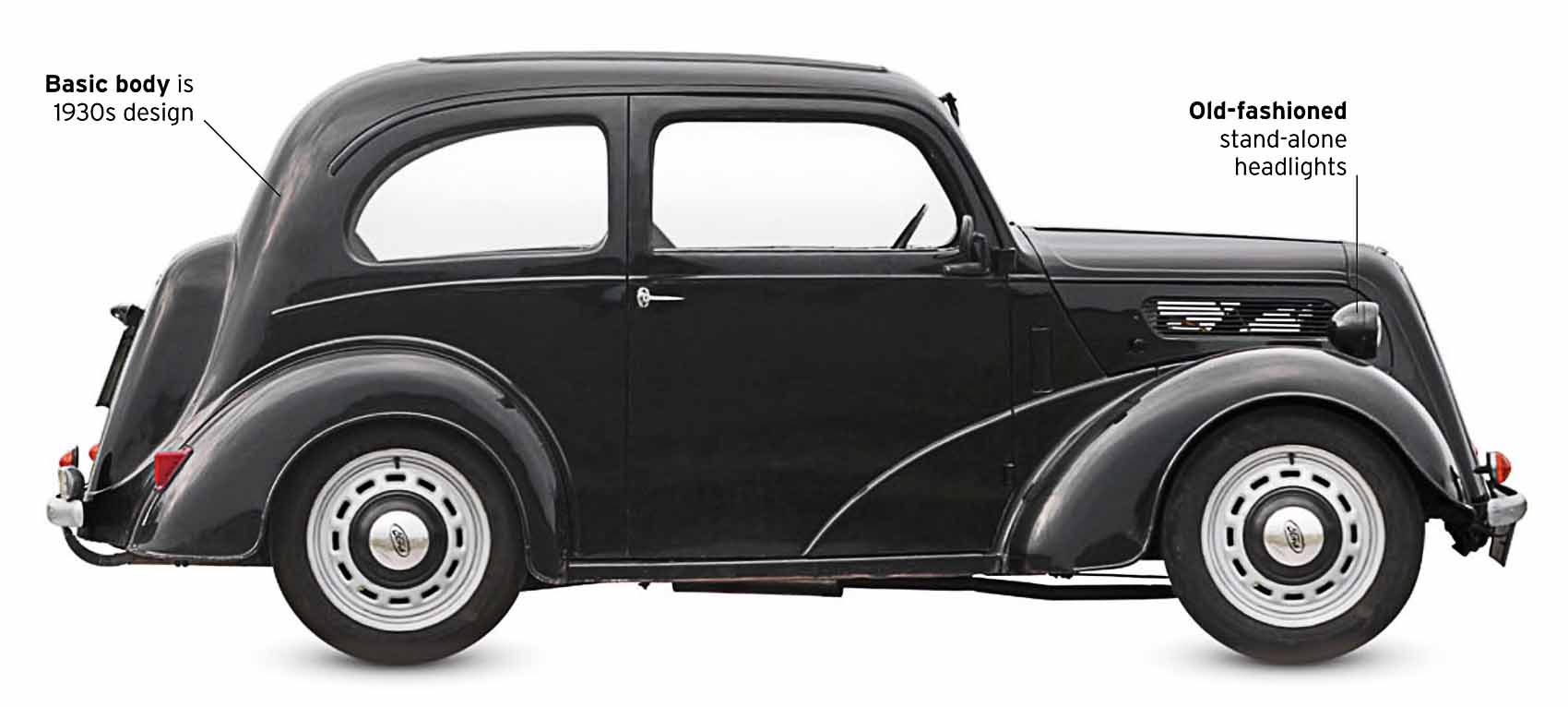
Economical Cars
The 1950s was a decade when a lot of people who had only dreamt of owning a car actually managed to do so for the first time. For some, economy was important, so they either bought something second-hand, or even ultra-frugal microcars, such as the Heinkel three-wheeled “bubble car”. For most, however, a small saloon with more space for people and luggage was needed. Many of the decade’s most popular small cars were rear-engined, made in their millions by the likes of VW, Fiat, and Renault, who offered their customers plenty of models and designs to choose from.
Morris Minor, 1948

| Origin | UK |
| Engine | 918 cc, straight-four |
| Top speed | 62 mph (100 km/h) |
The Morris Minor has a raised area in the middle of its bonnet as the design was changed before production, making the car shorter and wider. Designed by Mini creator, Alec Issigonis, the Minor mixed practicality with good handling. It saw massive success throughout the 1950s.

Timeless design
During the Morris Minor’s 23-year production run its distinctive shape remained little altered. Its look was influenced by 1940’s car styling trends, and because rounded panels were often stronger than flat ones.

Flathead engine
Early Morris Minors were powered by “flathead” engines, which dated from the 1930s. They were replaced by the Austin-designed A Series engine, which remained with the car until 1971.
Ford Popular 103E, 1953

| Origin | UK |
| Engine | 1,172 cc, straight-four |
| Top speed | 60 mph (96 km/h) |
By 1953 the Ford Popular 103E was an antique, the basic design of which dated back to the 1930s, as demonstrated by its separate wings, rod brakes, three-speed gearbox, and side-valve engine. This did not stop Ford selling it until 1959 to buyers for whom affordability mattered more than fashion.
Nash Metropolitan, 1954

| Origin | UK / USA |
| Engine | 1,489 cc, straight-four |
| Top speed | 75 mph (121 km/h) |
A joint venture between Britain’s Austin and America’s Nash, the Metropolitan was designed to combine transatlantic style and British engineering in a compact form intended to appeal to wealthy women. To make it cost-effective, it was built using a large number of existing Austin parts.
Renault Dauphine, 1956

| Origin | France |
| Engine | 845 cc, straight-four |
| Top speed | 66 mph (106 km/h) |
A development of the tiny, rear-engined Renault 4CV saloon, the Dauphine kept that vehicle’s mechanical layout, but put it into a larger, stylish body that resembled Renault’s conventional Fregate big saloons. Despite sometimes wayward handling and rust problems, more than two million Dauphines were sold in 12 years.
Fiat 600 Multiple, 1956

| Origin | Italy |
| Engine | 633 cc, straight-four |
| Top speed | 55 mph (88 km/h) |
This box-shaped car could hold six people, even though its body was just 11½ ft (3.5 m) long. The engine was located at the back, and the car’s front occupants sat above the front axle. A very early people carrier, it was originally conceived as a taxi.
It is a quote. The Classic Car Book – The Definitive Visual History 2016




